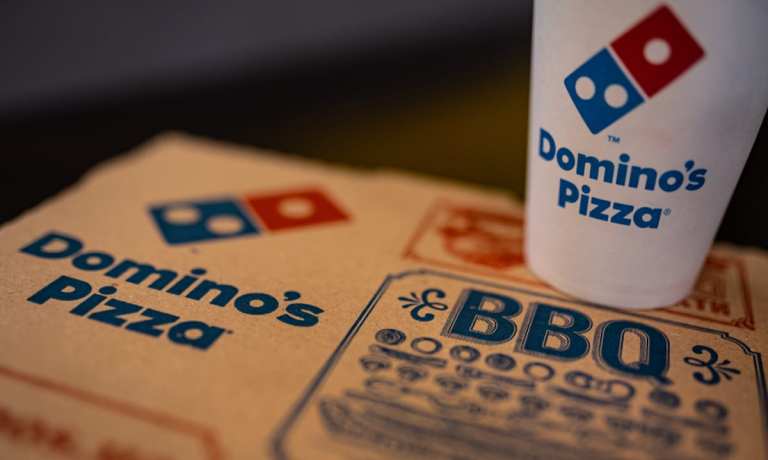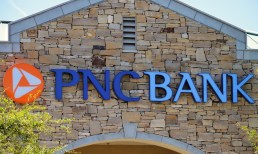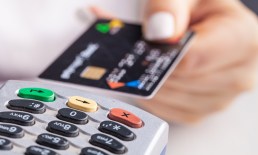“We struggle a little bit understanding the long-term economics in some of the aggregator businesses,” Domino’s CFO Stu Levy said on a call with analysts. “You know, in 60 years, we’ve never made a dollar delivering a pizza. We make money on the product, but we don’t make money on the delivery, so we’re just not sure how others do it.”
Placing an even finer point on it, Levy later added that “we have some questions about the viability of that long term, if you’re an independent, paying exorbitant fees for a third party to step into your value chain. So when does that all shake out? Your guess is as good as ours.”
Not only do these third-party partnerships drive down profit margins per order, but they also dilute restaurants’ access to information about consumer buying behavior. As CEO Richard Allison pointed out, “it just doesn’t make sense for us or our franchisees economically. And if it doesn’t make sense, economically, it certainly doesn’t make sense to take the risk of sharing all of our customer data with these third parties.”
Domino’s has had a leg up on other restaurants throughout the pandemic, with its well-established delivery infrastructure driving sales since the initial lockdown. While this may seem like a short-term strategy whose benefits may subside as vaccines roll out around the world, Domino’s intends to continue investing in its delivery channel in the coming years. As Allison described it: “We’ve got a set of strategies we’re going to continue to execute on the delivery side … so that we can hold onto those customers that we gained during the course of 2020.”
How A Minimum Wage Increase Could Impact Sales Channels
Advertisement: Scroll to Continue
To minimize the impact of a wage increase on profit margins, Domino’s will prioritize in-store pickup, which requires significantly less labor than delivery. “We are very much focused on growing that carryout business in 2021 and forward,” explained Allison. “While the ticket is lower on a carryout order … there’s so much less labor cost associated with each of those carryout orders that the higher the average hourly labor rate gets in your market, the more the profitability equation tilts toward those carryout orders.” In fact, pre-pandemic, carryout orders made up 45 percent of Domino’s U.S. sales, though lockdowns shifted the balance back to delivery. Allison pointed out that in international markets that already have higher minimum wage requirements than the U.S., carryout proves to be a profitable channel.
One channel that has been successful for many quick-service restaurants (QSRs) during the pandemic is drive-thru, which offers convenience and safety and requires minimal human contact. Like carryout, drive-thru orders require minimal time to fulfill, making them a more profitable option for restaurants as wages rise. Domino’s, however, has very few drive-thru locations. What the chain does have, as of last summer, is carside delivery.
“We look at carside delivery as the way we will compete against the drive-thru,” said Allison. “…our aspiration here, which is well within reach, is that we get to a point where you can get carside delivery at Domino’s faster than you can wait in line at a QSR drive-thru.”
Investments In Next-Gen Technology
As digital sales saw a slight increase during the pandemic, Domino’s unveiled a number of new technological initiatives. Among these, Allison said, were “our GPS driver tracking, our enhanced makeline and cut-table technology and tools, and our AI-enabled forecasting to better match demand with capacity in our stores.”
The AI forecasting, according to Domino’s Manager of Data Science and AI Zack Fragoso, is a model that predicts when pizzas are ready to be sent out. “We recently boosted accuracy from 75 percent to 95 percent for predictions of an order’s readiness,” said Fragoso. “…One of the next big steps for our team is tapping a bank to accelerate AI inferencing for all Domino’s tasks that involve real-time predictions … we’re just getting started with AI.”
The chain has also seen growth in its mobile app user base. The number of active members of the Piece of the Pie Rewards loyalty program grew to over 27 million, with more than 40 million enrolled members. Allison noted, “We also saw an increase in engagement and frequency among that group as well, which is a big focus of ours…So we spent a lot of time on initiatives thinking about how can we continue to mine that treasure of customers, and find ways to better serve them at their time of need, to drive to drive higher frequency.”
Allison also pointed that the loyalty growth did not require any special offers or costly limited-time promotions, as it was achieved “without, in the final three quarters, the use of any of our more aggressive boost weeks, which are an important tool to drive customer acquisition.”
This continued loyalty boost may help Domino’s parlay its 2020 delivery growth into the post-pandemic future. The most recent edition of the PYMNTS-Paytronix Delivering on Restaurant Rewards report found that 16 percent of consumers say that offering rewards is the best way to encourage them to spend more on food, and the December edition found that 87 percent of restaurant customers plan to order food as they do now even after the pandemic has subsided. Domino’s current uptick in loyalty users’ frequency presages a promising future for its mobile ordering channel.




